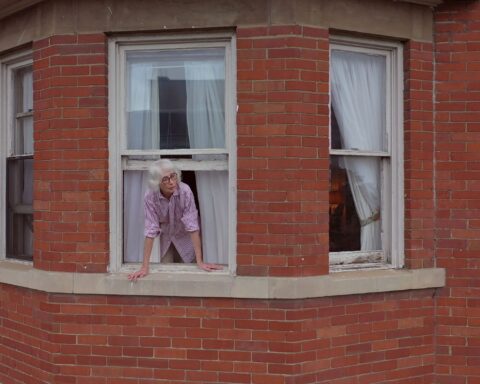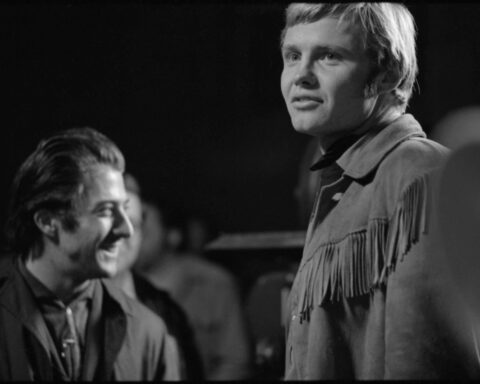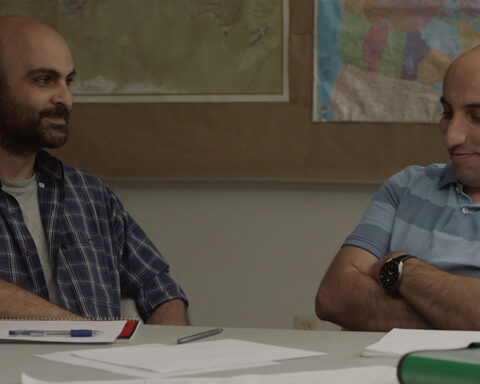In the immediate aftermath of the 2004 American election, the editors of Seattle alt-weekly The Stranger penned a manifesto for what they termed “The Urban Archipelago,” the blue-voting cities that had just been smacked down by the red ruralists. It was reactionary, condescending, and sometimes off-puttingly cruel, but that was the point: city folk, and the values for which they stood, had been demonized by “country bumpkins” (and suburbanites and small-towners) for too long, climaxing in the cultural divide of the Bush era. This dictum was a call to arms, and an enumeration of exactly why urban life should be a source of pride: “We are for contentiousness, discourse, and the heightened understanding of life that grows from having to accommodate opposing viewpoints.”
Thesis and antithesis create synthesis. Ideas, culture, evolution exist because of interaction, or at least exposure. For years, Roger Ebert has written of the power of film in this way. “We are born into a box of space and time,” he remarked upon being made an honourary lifetime member of the Directors Guild of America, “and the movies come closer than any other art form in giving us the experience of walking in someone else’s shoes.” What makes movies (and indeed most arts) great is that, like cities, they explode open the solitudes into which we so easily burrow ourselves.
Hadley Obodiac’s documentary Living City: A Critical Guide exists, as its title implies, at this intersection. Its mission, in a way, is not dissimilar to The Stranger’s —except it’s about Canadian cities and its tone is therefore, well, a lot nicer. Its message, however, is no less urgent: Canada, and to a greater extent all of civilization, depends on the health of cities. As Toronto Star columnist Christopher Hume tours the nation, examining the livability of six urban centres—Halifax, Montreal, Toronto, Winnipeg, Calgary, and Vancouver—he poses the question of sustainability and the degree to which the physical, emotional, and mental cultures of cities will play a part in saving us from ourselves.
***
The first time I heard Christopher Hume speak, I was surprised he had a trace of a British accent. This was at the University of Toronto in 2005, when the urban-form pundit was sitting on a panel concerning the architecture of post-secondary institutions.
During the question and answer session, a number of audience members expressed their frustration about what they termed the “office building” appearance of the then-new Woodsworth College Residence, where I was living at the time. The tinted-glass tower, sprouting 17 storeys above the northern gateway to the downtown campus, had replaced the St. George Apartments, a heritage property and former graduate residence. I appreciated that Hume defended Woodsworth as one of the best residential buildings in the city.
It possessed so many of the things he looks for in a structure: sensitivity to context, attention to detail, large windows maximizing natural light, and above all, an enhancement to the streetscape. A building should become part of its surroundings rather than wall them out; how a structure looks and feels to those on the outside is at least as important as what it does for people on the inside. When Hume reviews new condominium projects as the Star’s architecture critic, he limits his observations to the exterior. Developers, planners, and architects should ask not what the city can do for them but what they can do for the city.
But this question is no longer exclusive to the professionals. Over the past decade, a renewed interest in urbanism has emerged and penetrated mainstream discourse. “I think cities in Canada are in tremendous transition. It’s part of the zeitgeist and discussion among the public right now. I think it’s key that people are beginning to care about the state and status of their cities,” Obodiac tells me. “Not just people who are planners and architects and politicians, but ordinary people who are living and working and going to school in Canada.”
For a while, I’ve speculated that this has been the result of a turn inwards; in response to a feeling of impotence from being unable to meaningfully affect change in the face of a larger, indifferent political system, citizens have taken to concerning themselves with their immediate environment. Thinking globally, acting locally, as it were.
Hume and Obodiac are more practical in their explanations for this trend. “I think the suburban dream has turned out to be a nightmare,” Hume says. “The price of gasoline, the amount of time people have to spend commuting… The interesting thing is not that people are getting back to urbanism but that they ever left it. The postwar period will go down in history as an aberration.”
“Eighty per cent of Canadians find themselves living in urban regions,” adds Obodiac. “That is actually our identity, even though we think of ourselves as a country of the landscape.”
Hume calls Canada a “postmodern urban nation” and rejects my use of the word “inward” to describe this new consciousness. “I think the inwardness is more about suburban life; being part of a city is being part of a community. I think the city enables people to mix, mingle. There’s no street life in the suburbs. The in-between spaces is where so much of life happens.”
The surburbs, as a concept and as a reality, fail “because there is no public space. These cities are built by corporations, and their priorities are not the priorities of city-building, they’re the priorities of profit-making. We’ve even handed over most of the planning. They don’t care about who lives in these places, they just care about how much money there is to be made.”
“It was a time when the automobile was king,” explains Montreal planner and architect Renée Daoust, speaking in the movie, “and we were producing these spaces, these streets, these highways, just for cars, for car movements. Now we’re trying to give back the cities to the people.”
***
“Do we shape cities? Or do cities shape us?” poses the trailer for the triptych film Tokyo!; the answer, of course, is both. The better question (though those are still impressively deep for a movie trailer) might be, “To what end?”
When I pose to her the question of the ultimate objective of cities, Obodiac offers one of the most elegant summations I’ve ever heard: “In very simplistic terms, creating an environment where people can live, work, and play, and aiming towards a seamless ease in all of that.”
Bundled up in this explanation seem to be the ideals of equity and sustainability, justice and inclusivity. After all, while the US is about life, liberty, and the pursuit of happiness, Canada’s mantra is peace, order, and good government. Though these sets of concepts are certainly not mutually exclusive, they do represent an ideological divide.
“We have moved from a suburban sensibility to an urban sensibility, where the emphasis isn’t on individual rights but rather the community, at the expense of the individual,” observes Hume. “The community being seen as a more important unit than the individual. I think Bush’s supporters were suburban in their mentality.”
The Bush regime, he explains, was a “suburban regime,” focusing on decentralization, whereas Obama is a distinctly urban figure, embodying the positive connotations of the term. The problem is that Canada is still governed with the former, anachronistic mentality, and has been for decades, if not most of our history. “All of a sudden, we’re the dinosaurs now,” says Hume. “My great fear is that we’re going to be the Argentina of the twenty-first century.”
Steering ourselves off that path is more about creating the space and conditions for an urban culture than trying to forge the culture itself. Ubiquitous creative-class social scientist Richard Florida (whom Toronto’s Eye Weekly once compared to Simpsons monorail huckster Lyle Lanley) is all about leveraging “cultural capital” to create prosperity. His U of T colleague, philosopher Mark Kingwell (who also enjoys baiting Florida with the “huckster” label), is more interested in leveraging social interaction in order to create justice.
My sympathies lie with Kingwell; while justice and prosperity are obviously closely associated, I tend to think that the latter is more likely to flow from the former, rather than the other way around. In his 2008 essay “Toronto: Justice Denied” (published in both The Walrus and the anthology Toronto: A City Becoming), Kingwell castigated Torontonians for perpetuating a paradigm of insularity even within the urban centre: “The smug inwardness of our de facto stealth neighbourhoods, the vertical gated communities of condo developments, the lifetime preoccupation with the averted gaze—all this shows a city not confident enough to engage with itself…. Race and class, poverty and hatred cannot find a point of intervention when the discursive space of the city is limited to surfaces.”
***
As Obodiac reminds me, the revitalization of Bilbao, Spain, was kicked off not just by the opening of Frank Gehry’s Guggenheim but by the earlier investment in its public infrastructure, particularly transit. Major cultural projects are only one piece of city building. At the same time, the emphasis on that aspect is not just due to the glamour factor, but also to the fact that that’s where our real civic leadership currently exists. Hume is fond of explaining that more initiative and vision is exhibited by the elite of our cultural sector than by our current elected representatives.
Many of the problems are structural and systemic: our electoral system, the hierarchy of our governments, and the composition of our elected bodies. All of these work against progress and need to be changed. But those ambitions may be longer-term than we can afford. Although everything in this country seems set up to stymie investment in our future, that does not make it impossible; it just puts more of the burden on us, the citizens and residents, to push for the future we want.
Largely because of the internet, says Obodiac, “the younger generation is a lot more tuned in to how cities affect them and how they will change and how they can bring about change.” Exposure and interaction, after all, now exist not only within communities but on a globalized scale, where the best practices and possibilities from around the world are instantly observable. “The most important thing is to create a discussion.”
Hume’s intention with Living City “is to provoke people into taking a hard look at the cities they live in and how much better they could be and what that would take… I don’t want people to like [the movie]. I want them to be angry, and I want them to be provoked into taking some kind of stance and demanding more and insisting on more than what we’ve got so far.”
“In the twenty-first century,” he says, “the objectives must be to increase transit, density, affordable housing. Those kinds of things we have to focus on, the rest will take care of itself. The cultural life will follow.”











